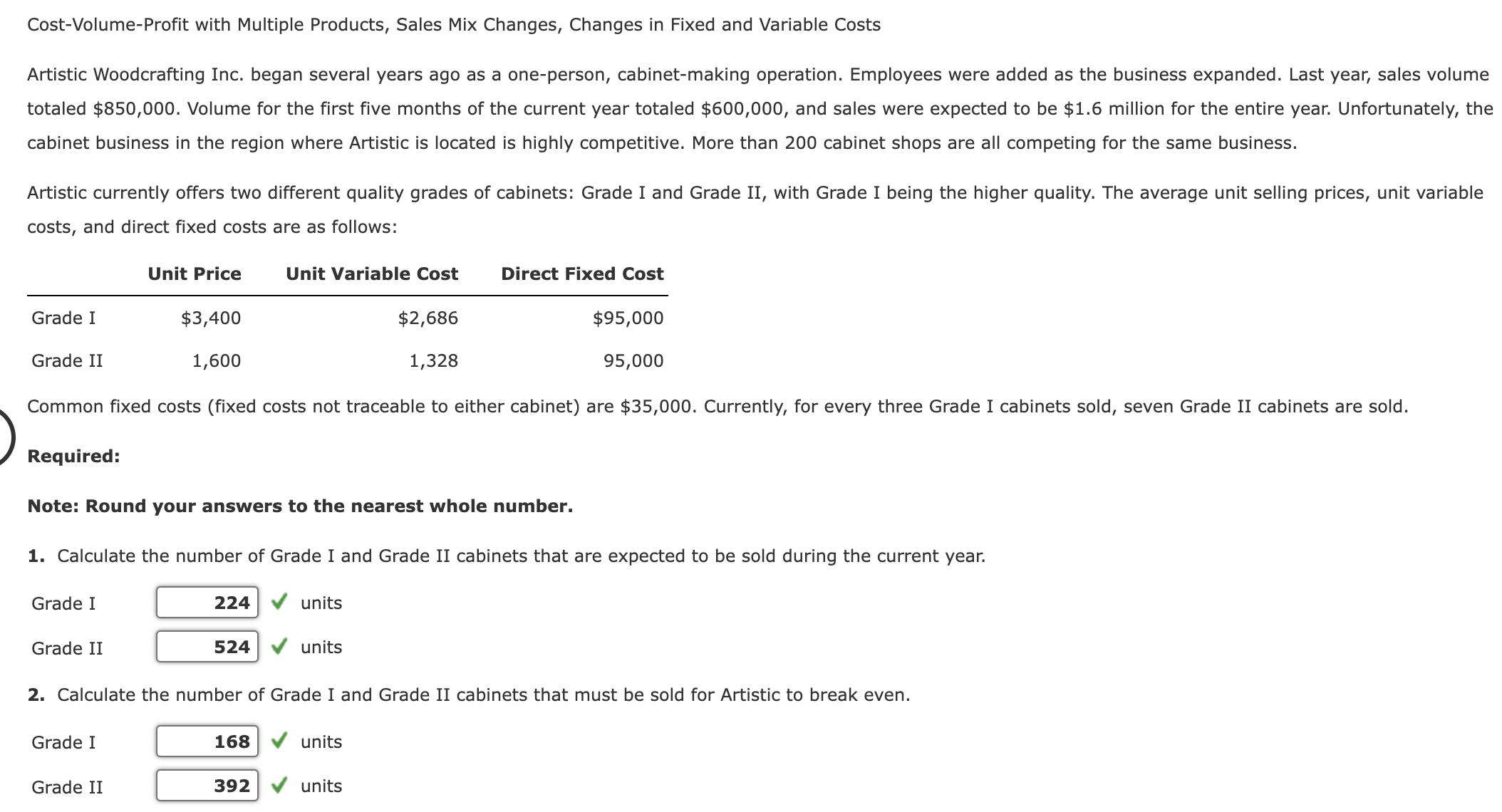Home /
Expert Answers /
Accounting /
cost-volume-profit-with-multiple-products-sales-mix-changes-changes-in-fixed-and-variable-costs-pa926
(Solved): Cost-Volume-Profit with Multiple Products, Sales Mix Changes, Changes in Fixed and Variable Costs ...


Cost-Volume-Profit with Multiple Products, Sales Mix Changes, Changes in Fixed and Variable Costs Artistic Woodcrafting Inc. began several years ago as a one-person, cabinet-making operation. Employees were added as the business expanded. Last year, sales volume totaled . Volume for the first five months of the current year totaled , and sales were expected to be million for the entire year. Unfortunately, the cabinet business in the region where Artistic is located is highly competitive. More than 200 cabinet shops are all competing for the same business. Artistic currently offers two different quality grades of cabinets: Grade I and Grade II, with Grade I being the higher quality. The average unit selling prices, unit variable costs, and direct fixed costs are as follows: Common fixed costs (fixed costs not traceable to either cabinet) are . Currently, for every three Grade I cabinets sold, seven Grade II cabinets are sold. Required: Note: Round your answers to the nearest whole number. 1. Calculate the number of Grade I and Grade II cabinets that are expected to be sold during the current year. Grade I Grade II units units 2. Calculate the number of Grade I and Grade II cabinets that must be sold for Artistic to break even. Grade I Grade II units units
3. Artistic can buy computer-controlled machines that will make doors, drawers, and frames. If the machines are purchased, the variable costs for each type of cabinet will decrease by , but common fixed cost will increase by . Compute the effect on operating income. Calculate the new break-even point. Assume the machines are purchased at the beginning of the sixth month. Fixed costs for the company are incurred uniformly throughout the year. Grade I Grade II units units